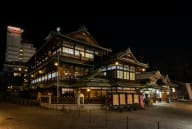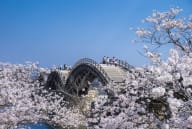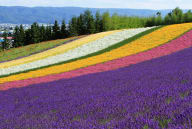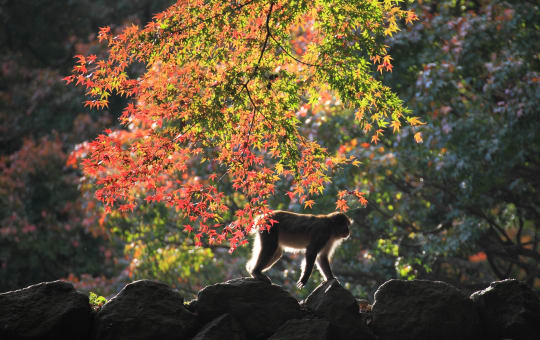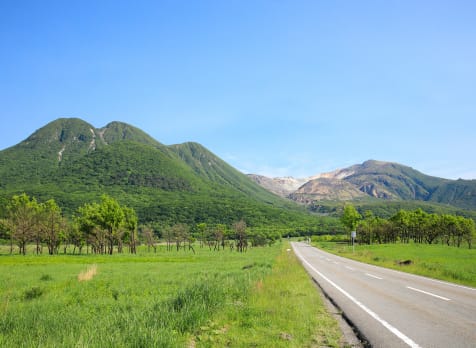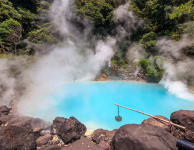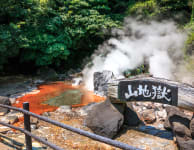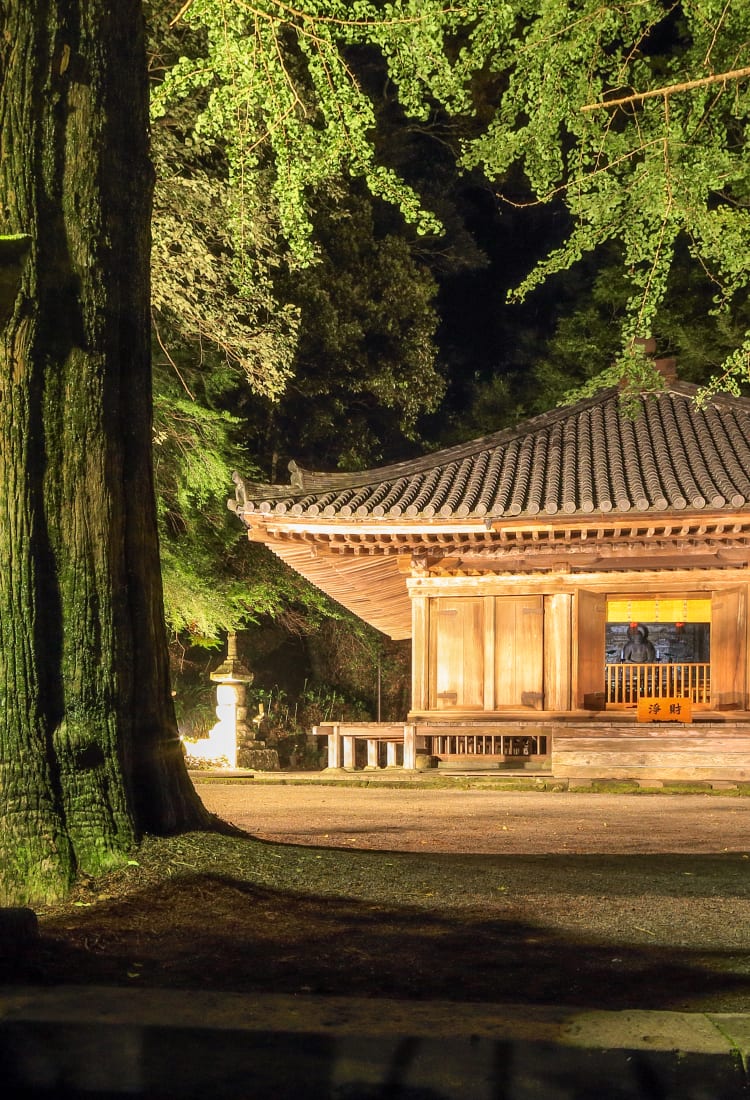

OITA Péninsule de Kunisaki Des sanctuaires, des temples anciens et des grottes remplies de statues de Bouddha
Des sanctuaires, des temples anciens et des grottes remplies de statues de Bouddha
La péninsule de Kunisaki, nichée dans l'arrière-pays du nord de la préfecture d'Oita, abrite un grand nombre de temples et de sanctuaires anciens ainsi que des grottes renfermant des milliers de statues de Bouddha.
Pour changer de décor, visitez Showa no Machi, une reconstitution d'une ville traditionnelle des années 1950.
À ne pas manquer
- Le sanctuaire d'Usa-jingu, à la tête de plus de 40 000 sanctuaires consacrés à la divinité Hachiman
- Un voyage dans le temps, à la découverte du Japon d'autrefois, à Showa no Machi
- Le temple Fukiji, classé trésor national
Comment s'y rendre
Les principales gares de la péninsule sont Usa et Kitsuki. Toutes deux sont accessibles en bus et en train, et le voyage est pris en charge par le JR Pass . Si vous souhaitez explorer l'arrière-pays de la péninsule, il vous faudra louer une voiture.
Les vols à destination de l'aéroport d'Oita depuis l'aéroport de Haneda à Tokyo prennent moins de 2 h, alors que ceux depuis l'aéroport d'Itami à Osaka prennent environ 1 h. Depuis l'aéroport d'Oita, prenez un bus limousine jusqu'à la gare de Hiji, puis empruntez la ligne Nippo pour accéder à la gare d'Usa ou de Kitsuki.
Depuis la gare d'Oita, prenez le train Sonic Limited Express ou la ligne Nippo jusqu'à la gare de Kitsuki (35 minutes), ou le Sonic-Nichirin Limited Express jusqu'à la gare d'Usa (38 minutes).
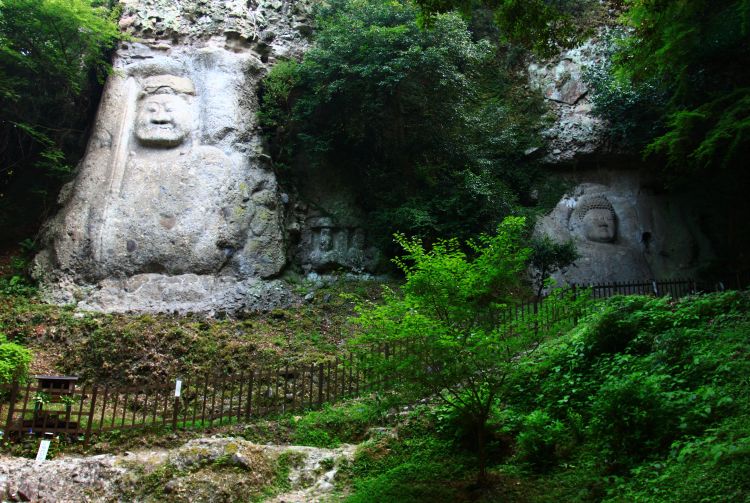
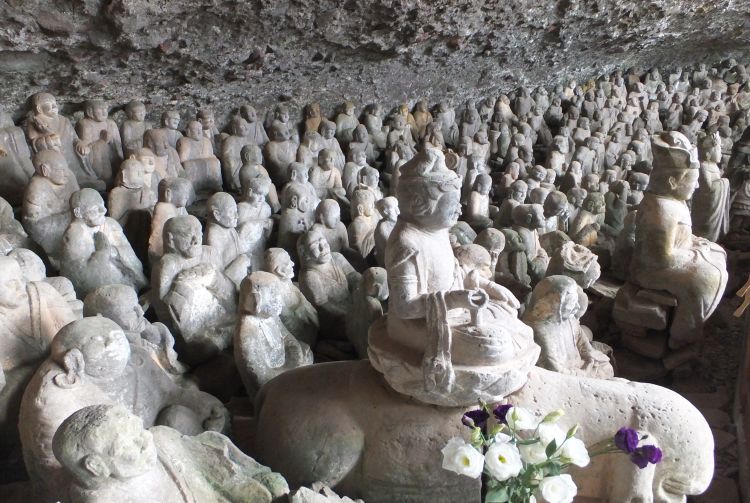
Pénétrez dans les grottes du mont Rakan
Les grottes près du temple Rakanji abritent plus de 3700 statues de Bouddha en pierre, dont 500 rakan, les disciples du Bouddha. Prenez le temps de vous y promener pour savourer un moment serein et paisible.
Admirez les vues panoramiques sur les sommets et vallées environnants du haut de Rakanji, puis visitez non loin de là le tunnel d'Aonodomon, construit par un moine qui cherchait un chemin plus sûr pour rejoindre le temple, à travers les montagnes de Kyushu. Selon la légende, il lui aurait fallu 30 ans pour creuser le tunnel à la main.

Visitez le sanctuaire d'Usa-jingu, le plus important des sanctuaires Hachimangu
Après les sanctuaires Inari, les sanctuaires Hachiman sont les plus nombreux du Japon. Les sanctuaires Hachiman sont dédiés au légendaire empereur Ojin, déifié comme Hachiman-shin, dieu des guerriers.
Le sanctuaire d'Usa-jingu , dans la ville du même nom, a été le premier à consacrer ce dieu, faisant de lui la divinité principale de tous les sanctuaires Hachimangu. Le sanctuaire est étroitement lié à la famille impériale, d'autant plus que le sanctuaire Hachimangu à Usa a contribué de façon très significative à la construction du Grand Bouddha de Todaiji à Nara .
Les vastes jardins du temple s'étendent sur quelque 15 hectares. Pénétrez dans le sanctuaire par la porte avant, en passant près du magnifique étang Hatsusawa.
Le contraste entre les murs de terre blancs d'Usa, ses piliers vermillon et ses touches noires et or est frappant. Le musée situé sur la droite en arrivant au sanctuaire mérite d'être vu.
Visitez Fukiji, l'un des trois temples bouddhistes consacrés à Amida du Japon
Construit au VIIIe siècle, le temple Fukiji, dans la ville de Bungotakada, est la structure en bois la plus ancienne de Kyushu. Le pavillon principal a été classé trésor national et son bouddha en bois assis fait partie des biens culturels importants du Japon.
La zone forestière paisible entourant le temple et l'ambiance sereine de ce dernier en font un lieu idéal pour la relaxation et la contemplation. Offrez-vous une heure de méditation assise zazen pour vous imprégner du pouvoir spirituel du temple.

Un portrait en 3D nostalgique du Japon d'après-guerre

Bungotakada abrite également Showa no Machi, un bourg japonais traditionnel recréé dans les années 1950, très prisé des touristes et de la population locale. Des boutiques pittoresques aux enseignes rétro vendent des appareils électriques, des encas, des jouets et d'autres objets d'époque.
Promenez-vous dans les rues ou prenez un plan du quartier pour découvrir ses facettes cachées. Plusieurs musées exposant des jouets et des outils de l'ère Showa méritent une petite visite.
















